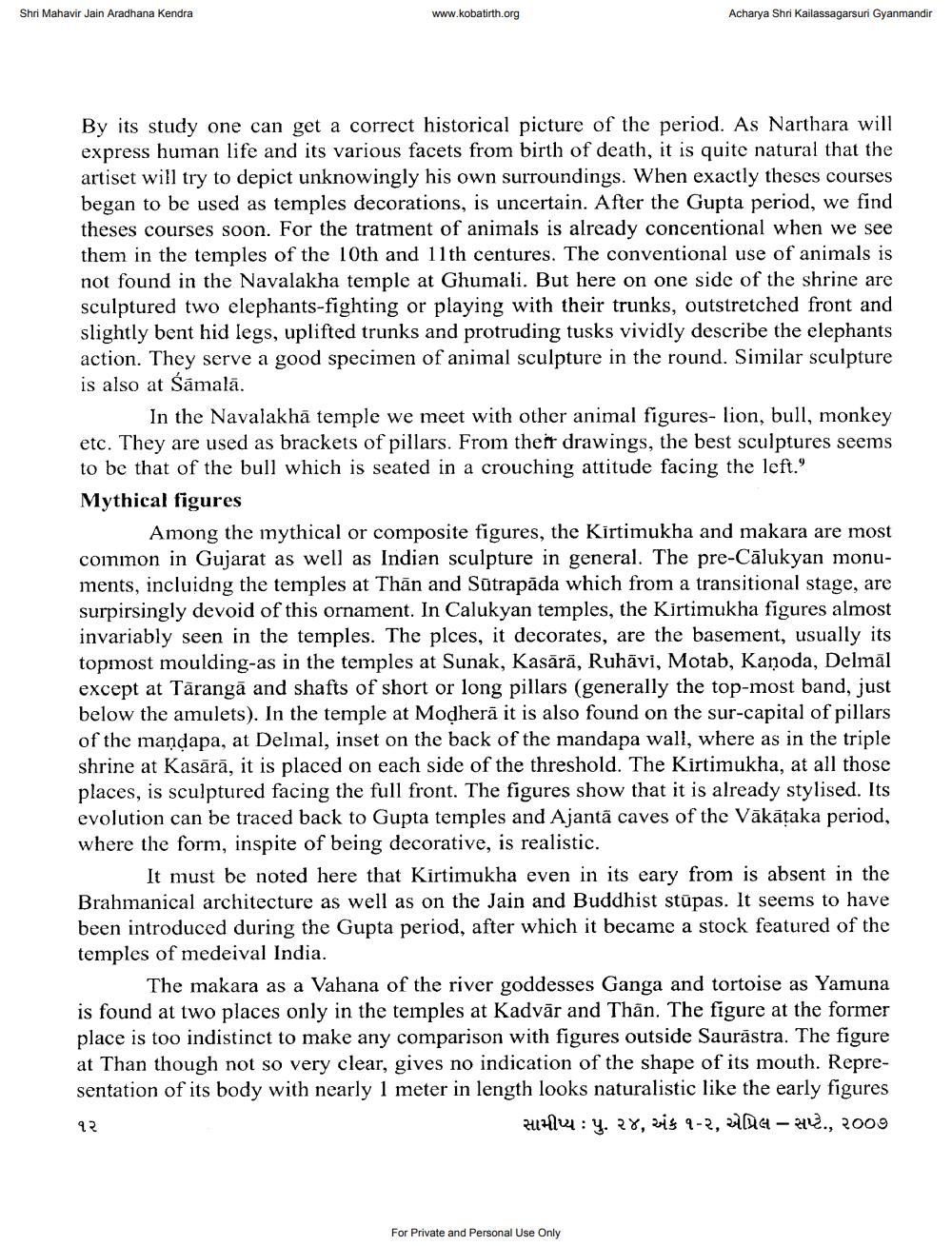________________
Shri Mahavir Jain Aradhana Kendra
www.kobatirth.org
Acharya Shri Kailassagarsuri Gyanmandir
By its study one can get a correct historical picture of the period. As Narthara will express human life and its various facets from birth of death, it is quite natural that the artiset will try to depict unknowingly his own surroundings. When exactly theses courses began to be used as temples decorations, is uncertain. After the Gupta period, we find theses courses soon. For the tratment of animals is already concentional when we see them in the temples of the 10th and 11th centures. The conventional use of animals is not found in the Navalakha temple at Ghumali. But here on one side of the shrine are sculptured two elephants-fighting or playing with their trunks, outstretched front and slightly bent hid legs, uplifted trunks and protruding tusks vividly describe the elephants action. They serve a good specimen of animal sculpture in the round. Similar sculpture is also at Sāmalā.
In the Navalakha temple we meet with other animal figures- lion, bull, monkey etc. They are used as brackets of pillars. From their drawings, the best sculptures seems to be that of the bull which is seated in a crouching attitude facing the left.' Mythical figures
Among the mythical or composite figures, the Kirtimukha and makara are most common in Gujarat as well as Indian sculpture in general. The pre-Cālukyan monuments, incluidng the temples at Thān and Sūtrapāda which from a transitional stage, are surpirsingly devoid of this ornament. In Calukyan temples, the Kirtimukha figures almost invariably seen in the temples. The plces, it decorates, are the basement, usually its topmost moulding-as in the temples at Sunak, Kasārā, Ruhāvi, Motab, Kanoda, Delmāl except at Tārangā and shafts of short or long pillars (generally the top-most band, just below the amulets). In the temple at Modherā it is also found on the sur-capital of pillars of the mandapa, at Delmal, inset on the back of the mandapa wall, where as in the triple shrine at Kasārā, it is placed on each side of the threshold. The Kirtimukha, at all those places, is sculptured facing the full front. The figures show that it is already stylised. Its evolution can be traced back to Gupta temples and Ajantã caves of the Vākāțaka period, where the form, inspite of being decorative, is realistic.
It must be noted here that Kirtimukha even in its eary from is absent in the Brahmanical architecture as well as on the Jain and Buddhist stūpas. It seems to have been introduced during the Gupta period, after which it became a stock featured of the temples of medeival India.
The makara as a Vahana of the river goddesses Ganga and tortoise as Yamuna is found at two places only in the temples at Kadvār and Thãn. The figure at the former place is too indistinct to make any comparison with figures outside Saurastra. The figure at Than though not so very clear, gives no indication of the shape of its mouth. Representation of its body with nearly 1 meter in length looks naturalistic like the early figures ૧૨
zut : 4.28,249-2, 2014 - ., 2009
For Private and Personal Use Only




